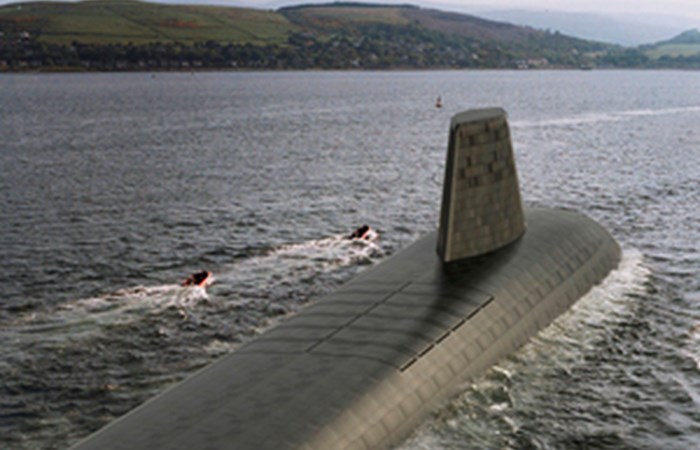Ministry of Defence

Defence Secretary Michael Fallon has today announced that, to mark Trafalgar Day, Her Majesty the Queen has graciously approved that Dreadnought, one of the most famous names in the Royal Navy, will become the lead boat and class name for the Royal Navys new successor submarines.
Named fifty six years after the launch of Britains first nuclear-powered submarine of the same name, Dreadnought has extensive historical significance, borne by no fewer than nine Royal Navy ships.
A previous Dreadnought sailed with Sir Francis Drake to repel the Spanish Armada; another was present with Nelson at Trafalgar, where her gunnery was acknowledged to be the most devastating of any ship present. But the most famous of all was the ninth Dreadnought a battleship so advanced that it rendered all others obsolete at a stroke. And it was 99 years ago this December, that the United States Navy sent four of its own dreadnoughts to join the Royal Navys Grand Fleet in Scapa Flow.
Such historical resonance will continue through the names of boats, 2, 3 and 4.
Today, the name remains synonymous with technical accomplishment and fighting power: not just in the United Kingdom, but around the world.
Defence Secretary Michael Fallon said:
Every day our ballistic missile submarines are used to deter the most extreme threats to Britains security.
We cannot know what dangers we might face in the 2030s, 2040s and 2050s, so we are building the new >Dreadnought class.
Along with increasing the defence budget to buy new ships, more planes, and armoured vehicles, thiscommitment shows we will never gamble with our security.
Construction began last month on the successor programme, which will deliver the most advanced and quietest submarine ever conceived by the Royal Navy, and the first to be designed to accommodate both male and female submariners from the outset.
As part of our 178 billion equipment plan, the programme will be supported by a defence budget that will rise every year until the end of the decade, meeting the NATO commitment to spend two per cent of GDP on defence.
Several hundred suppliers will be involved in the programme at its peak, almost 85 per cent of those based across the UK securing jobs from Scotland to the South of England
Find out more about Continuous At Sea Deterrence
